Protect Your Wood Cabin from Moisture and Rot with Essential Tips
Wood cabins offer a cozy, rustic charm that many homeowners cherish, but maintaining their structural integrity is vital for long-term durability. One of the primary threats to a wood cabin’s lifespan is moisture, which can lead to wood rot if not properly managed. Wood rot, caused by fungi thriving in damp environments, can weaken the structure, leading to costly repairs or even safety hazards. Fortunately, there are preventive measures and effective repair methods to ensure your wood cabin stays dry, safe, and strong.
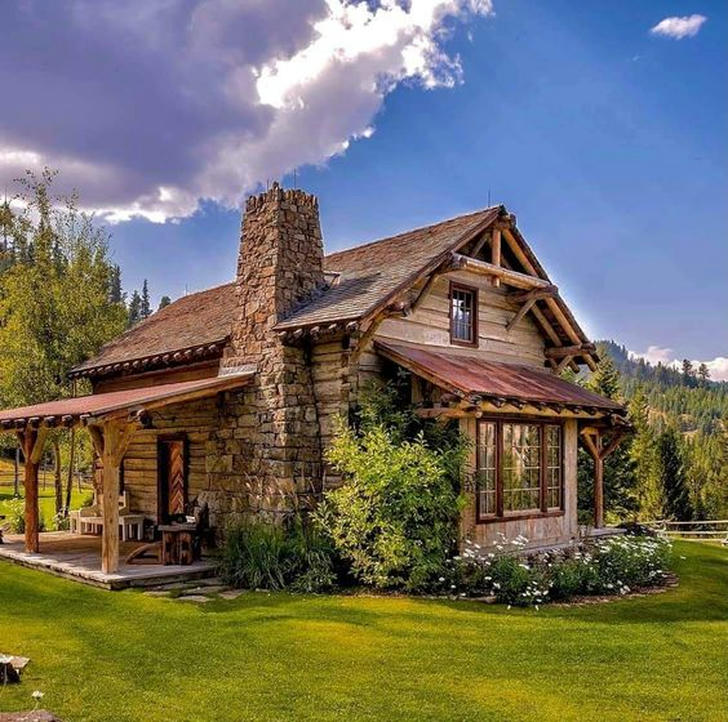
Understanding the Problem: Moisture and Rot in Wood Cabins
Moisture is a natural enemy of wood. When wood absorbs excess moisture, it swells, weakens, and becomes an ideal environment for fungi to grow. Over time, this can cause wood to decompose and lose its strength, leading to rot. The most common types of rot are dry rot and wet rot, both of which thrive in areas where moisture is allowed to persist. These fungal infestations not only damage the wood but can also spread quickly, affecting large parts of the cabin if not treated immediately.
Case Example: A cabin owner in the Pacific Northwest noticed that the wooden beams in their cabin's basement were becoming soft and spongy. After investigating, they found signs of wet rot caused by poor drainage around the foundation. The moisture from the surrounding soil was consistently seeping into the wooden structure, creating the perfect breeding ground for rot.
Prevention: Keeping Moisture at Bay
Preventing wood rot starts with controlling moisture exposure to the structure. Here are key measures to take:
1.Improve Drainage Around the Cabin Ensuring proper drainage is crucial to prevent moisture from accumulating around the foundation. Water should be directed away from the cabin to avoid it seeping into the wooden walls, foundation, or floors.
Solution: Install a French drain system around the foundation to channel water away from the cabin. Make sure the ground slopes away from the cabin, allowing water to flow naturally in the right direction.
Case Example: A cabin in a wooded area had frequent flooding issues, resulting in water pooling around the foundation. After installing gutters and a French drain, the water was diverted effectively, and the basement remained dry.
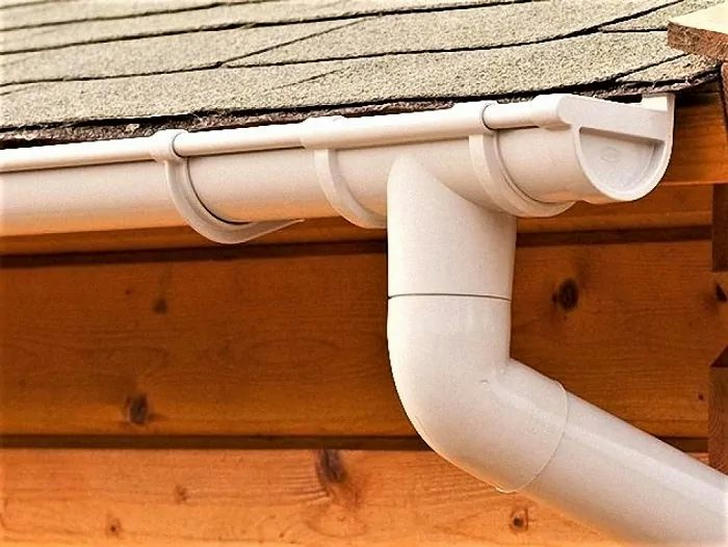
2.Use Quality Sealants and Waterproof Coatings Protecting the exterior of the cabin with high-quality sealants and waterproof coatings can prevent moisture from penetrating the wood. The protective layer prevents rain and snow from saturating the wood.
Solution: Use exterior wood sealers or waterproof paints that create a barrier against water. Regularly reapply these coatings, especially in areas exposed to harsh weather conditions like heavy rain or snow.
Case Example: A log cabin owner in a cold climate applied a waterproof wood finish every two years. This helped prevent the wood from absorbing moisture during snow and rain seasons, significantly reducing the risk of rot.
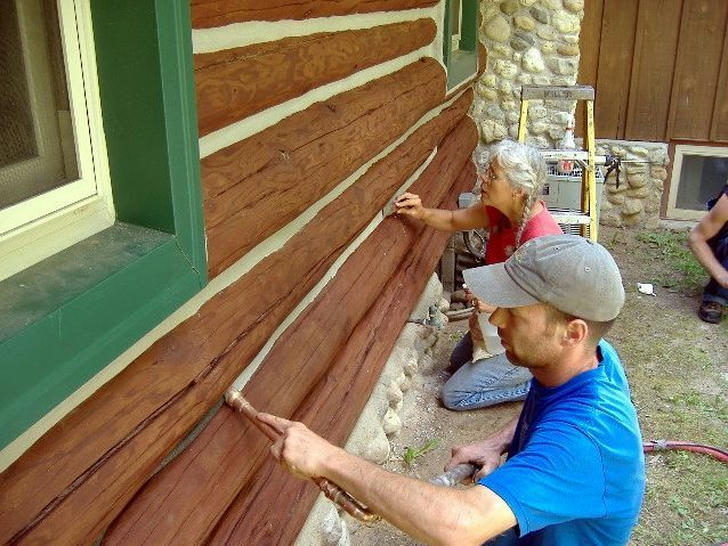
3.Ensure Proper Ventilation Adequate ventilation is essential for maintaining a dry environment inside the cabin. Stale, moist air can promote mold and mildew growth, which can lead to wood rot over time.
Solution: Install vents in the attic and crawl spaces to allow airflow and reduce humidity. If necessary, use a dehumidifier in areas with poor natural ventilation.
Case Example: A cabin in a coastal region experienced high humidity, causing mold and mildew to form on wooden surfaces. After installing a dehumidifier and increasing attic ventilation, the moisture levels dropped, and the problem was resolved.
4.Check for Leaks in Roof and Gutters Leaking roofs or clogged gutters can allow water to trickle down into the wooden structure, creating an environment ripe for rot.
Solution: Regularly inspect your roof for damage, and clean gutters to ensure water is properly channeled away from the house. Make repairs as soon as you spot issues like loose shingles or rusted gutter systems.
Case Example: A cabin owner noticed stains on the ceiling after a heavy rainstorm. Upon inspection, they found that the roof had a small leak. Fixing the roof immediately prevented further water damage and mold growth inside.
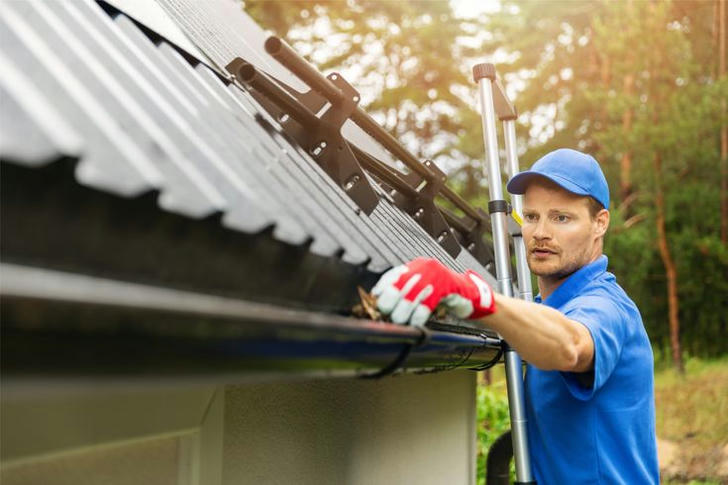
5.Maintain the Cabin’s Exterior Paint and Staining Wood that’s exposed to the elements without adequate protection is prone to rot. Regular maintenance of exterior paint and staining can help seal out moisture and prevent deterioration.
Solution: Repaint or restain the cabin’s exterior every 3–5 years, depending on your location’s climate. This will maintain a waterproof layer while enhancing the wood’s aesthetic appeal.
Case Example: A cabin in a forested area had its exterior painted every three years. This practice kept the wood from absorbing moisture, preventing rot and ensuring the cabin looked great year-round.
Repairing Wood Rot: What to Do if Rot Occurs
Despite your best efforts at prevention, wood rot can sometimes occur, especially if the damage has been long-term or unnoticed. Here are steps for repairing the damage:
1.Remove Rotting Wood The first step in repairing wood rot is to remove any decayed wood. This prevents the rot from spreading to other areas of the cabin.
Solution: Use a chisel or pry bar to carefully remove the affected wood. Be sure to discard any wood that is completely softened or crumbly. If you are working with structural elements like beams or joists, be cautious and ensure the structure remains stable after removal.
Case Example: A cabin owner discovered soft spots in their floorboards caused by water damage. They removed the rotted wood and replaced it with new treated lumber, reinforcing the floor’s strength.
2.Treat the Affected Area with Wood Hardener If only part of the wood has rotted, you can apply a wood hardener to stabilize the remaining material and prevent further degradation.
Solution: After removing the rot, apply a wood hardener to the affected area. This helps to restore the wood’s integrity and ensures it’s structurally sound before adding a new piece.
Case Example: After removing rotting wood from a window frame, the homeowner treated the remaining structure with a wood hardener. This kept the remaining wood stable while new trim was installed.
3.Replace Rotted Wood In cases of extensive rot, it may be necessary to replace large sections of wood.
Solution: Use pressure-treated wood or wood that’s naturally resistant to rot, such as cedar or redwood, to replace the damaged sections. For critical structural elements, consult a professional contractor to ensure the repairs are up to code.
Case Example: A log cabin owner had to replace several structural beams that had been severely affected by dry rot. They chose pressure-treated lumber for the replacements, ensuring the new beams would resist moisture and rot.
4.Seal and Protect the New Wood After replacing rotted wood, ensure the new wood is properly sealed and protected from moisture. This step will help prevent further damage.
Solution: Apply a waterproofing agent or exterior wood stain to the new wood. This will help maintain the wood’s integrity and prevent future rot.
Case Example: After replacing several rotting boards on their deck, a cabin owner sealed the new wood with a waterproof stain, which kept it in excellent condition through subsequent rainy seasons
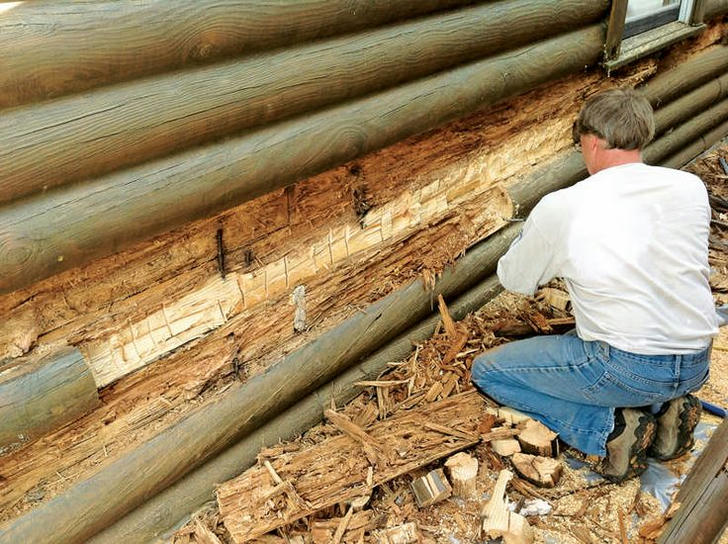
Conclusion
Preventing wood rot in your cabin is all about maintaining a dry, well-ventilated environment and addressing potential moisture sources early. By improving drainage, sealing the cabin’s exterior, ensuring proper ventilation, and performing regular inspections, you can keep your wood cabin safe from moisture and rot. If rot does occur, acting quickly by removing the damaged wood, treating the area, and replacing it with quality materials will ensure your cabin remains structurally sound for years to come. With these proactive steps, you can enjoy your cabin’s rustic charm without worrying about the damaging effects of rot.
